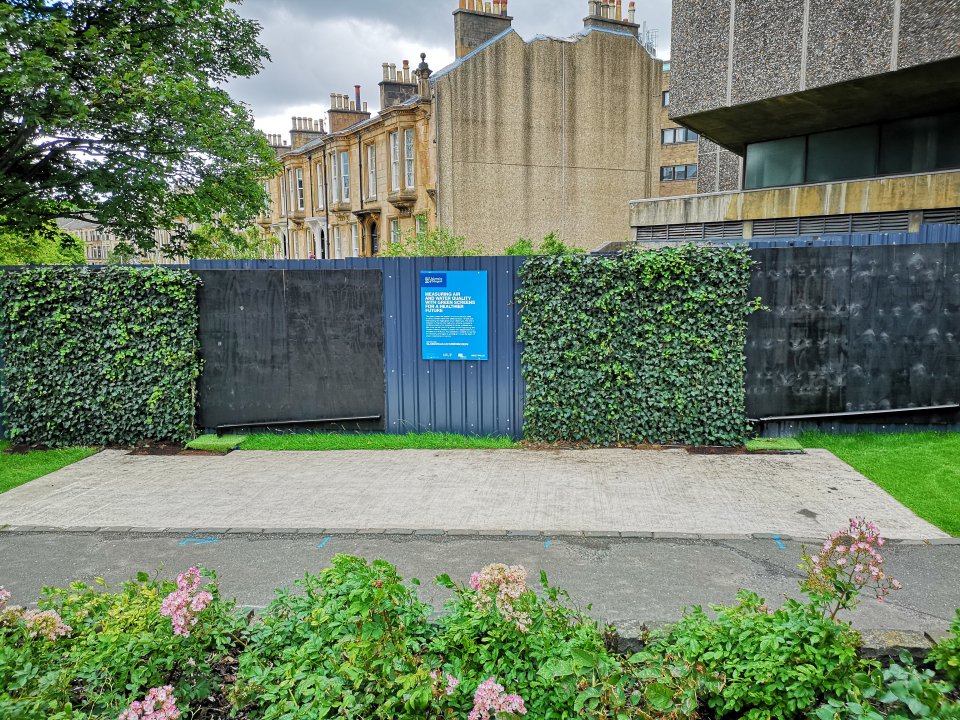
This project is being performed in 3 location across the University of Glasgow Gilmorehill Campus.
To investigate the extent to which green screens (helix hedera) may provide regulatory ecosystem services. This includes acting as a buffer against airborne particulate pollution and reducing rainfall runoff rates compared to normal plywood construction hoarding.
- Buffer against airborne particulate pollution
- Reduced rainfall runoff
- Habitat Provision (not tested)
- Aesthetic
- Developing climate change adaptation; improving risk management and resilience
- Reduce load to sewer system
- Reduce run-off
- Greater ecological connectivity across urban regenerated sites
- Improve connectivity and functionality of green and blue infrastructures
- Increase quality and quantity of green and blue infrastructures
- Improve air quality
- Increase well-being
- Provision of health benefits
- Improving the functionality/effectiveness of green screens
- Understanding the potential effects that may be achievable with widespread deployment
- Highlighting to policy-makers how vegetation can be an effective buffer against particulate pollution but needs to be properly planned and tailored to an area.
Project still in progress, Initial results suggest green screens may be an effective buffer ainst particulate pollution, particularly when particle concentrations are higher. Results also suggest that screens may reduce runoff rates. Additonally, student-led questionairres have indicated that the public look favourably on the green screens.
- EPSRC iCase Funding (Arup)
- Screens provided at cost-price by Mobilane
- Funding assistance from Multiplex
- Vertical Greening Systems
Neil Jackson - n.jackson.1@research.gla.ac.uk
Dr Larissa Naylor - Larissa.Naylor@glasgow.ac.uk


